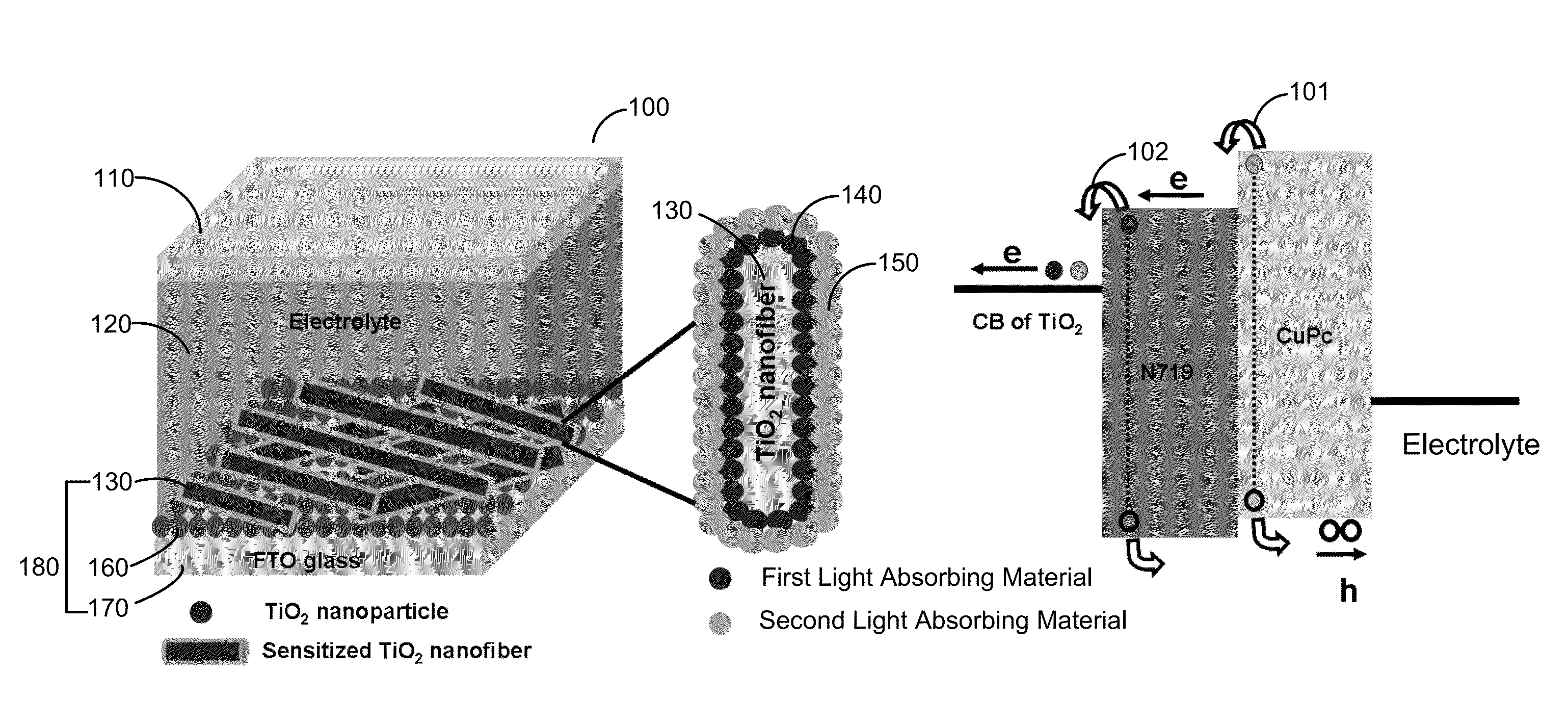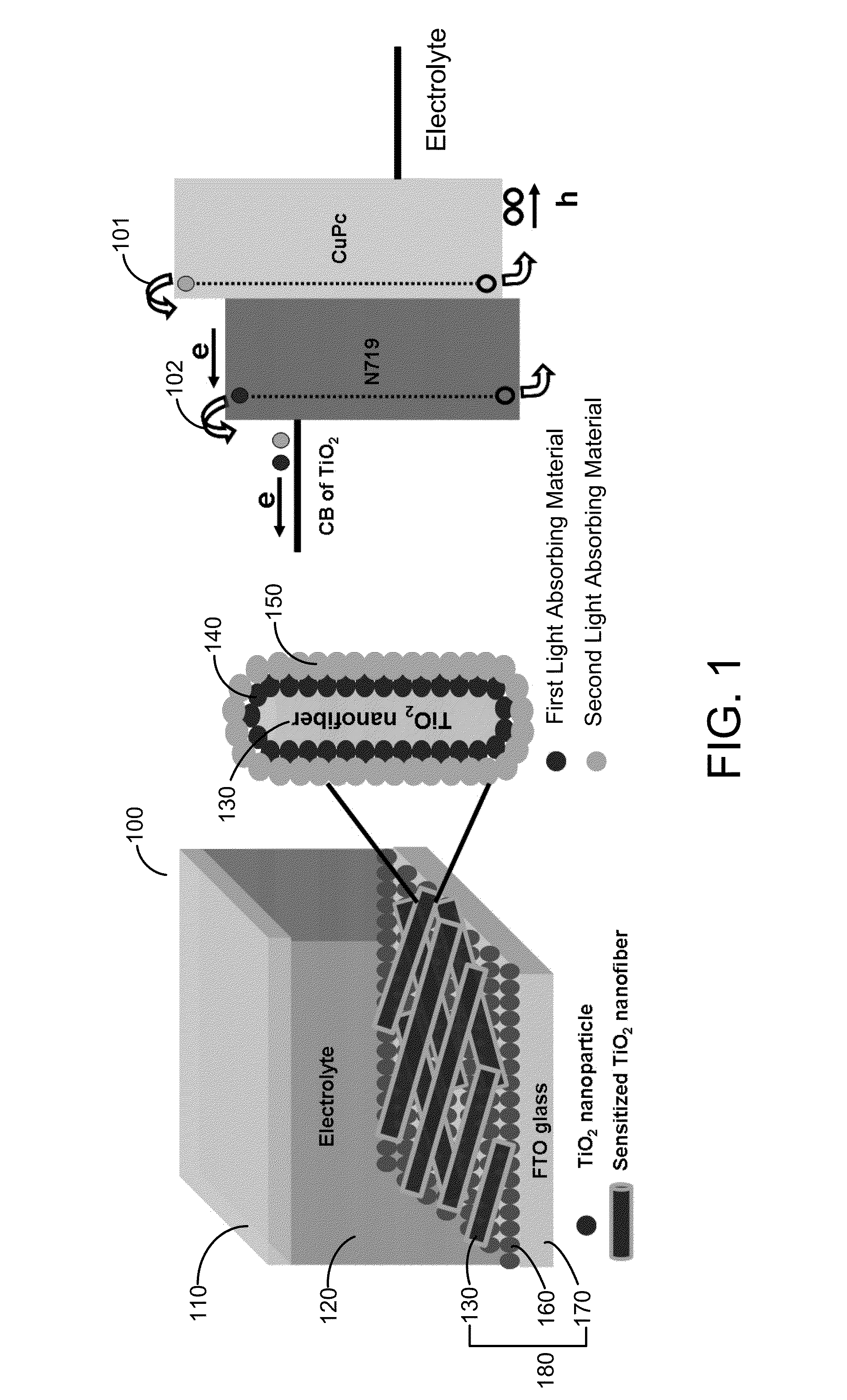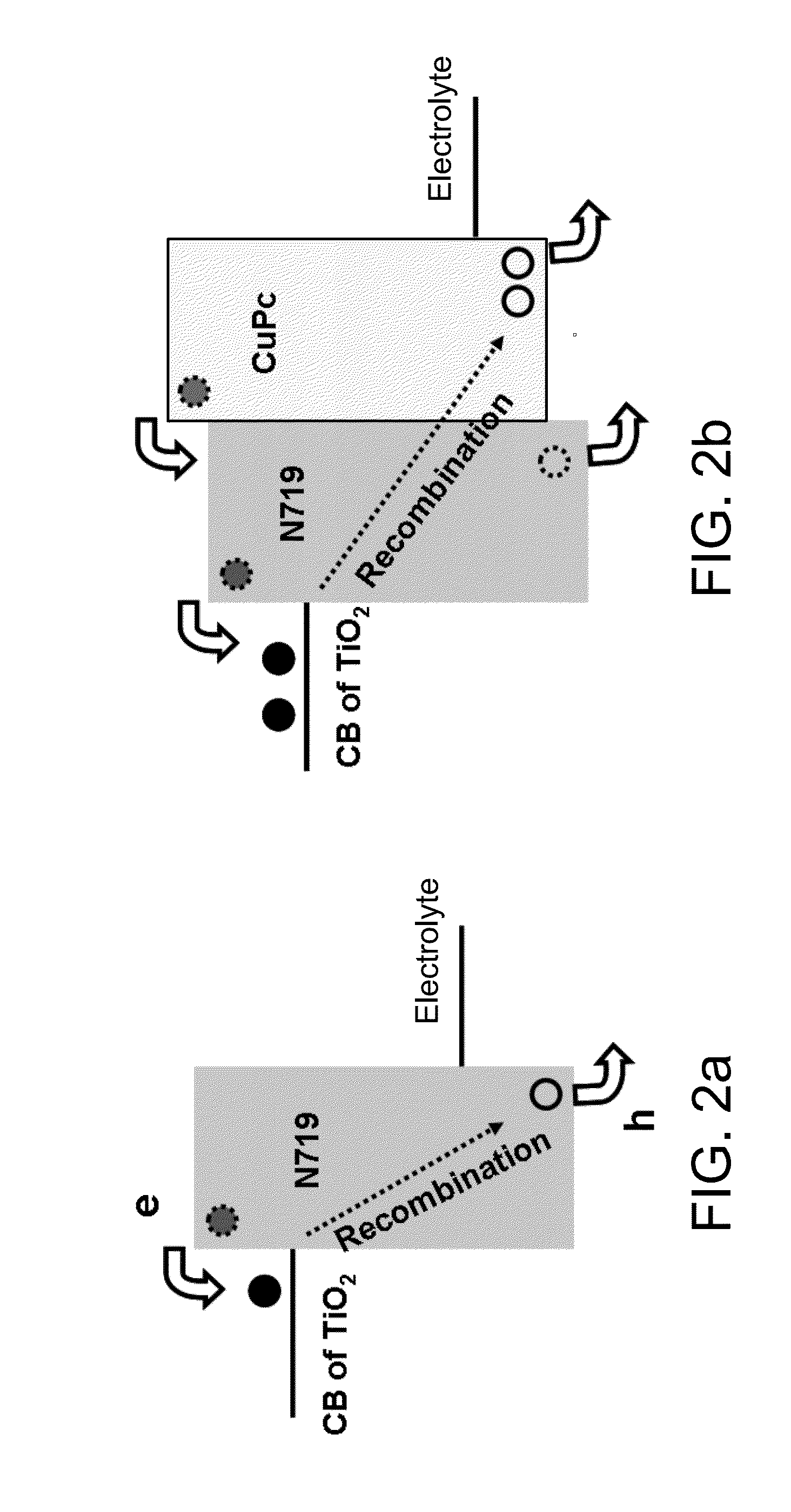Dye-sensitized solar cell based on indirect charge transfer
- Summary
- Abstract
- Description
- Claims
- Application Information
AI Technical Summary
Benefits of technology
Problems solved by technology
Method used
Image
Examples
Embodiment Construction
[0031]The accompanying drawings, which are incorporated in and constitute a part of the specification, illustrate embodiments of the invention and, together with the description, serve to explain the principles of the invention.
[0032]DSSC offers the potential of low-cost, high-efficiency photovoltaic device. However, conventional DSSC cannot utilize all of the photons of the visible solar spectrum and consequently the realized power conversion efficiency (PCE) is limited. The present invention discloses a core-shell photoanode, where a thin shell of infrared dye is deposited on the core of sensitized TiO2 nanofiber. In such architecture, photons are absorbed by the infrared dye and undergo charge transfer to the sensitizing dye, which broadens the absorption spectrum and suppresses the recombination process (electron back reaction and recombination with electrolyte ions). In one embodiment, ruthenium-based dye (N719) sensitized TiO2 nanofibers are wrapped by thin-shell of copper pht...
PUM
 Login to View More
Login to View More Abstract
Description
Claims
Application Information
 Login to View More
Login to View More - R&D
- Intellectual Property
- Life Sciences
- Materials
- Tech Scout
- Unparalleled Data Quality
- Higher Quality Content
- 60% Fewer Hallucinations
Browse by: Latest US Patents, China's latest patents, Technical Efficacy Thesaurus, Application Domain, Technology Topic, Popular Technical Reports.
© 2025 PatSnap. All rights reserved.Legal|Privacy policy|Modern Slavery Act Transparency Statement|Sitemap|About US| Contact US: help@patsnap.com



